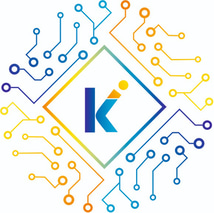Integrated circuits (ICs) are the backbone of modern electronics, and understanding their intricacies is essential for any engineering pracices.
Introduction
Integrated circuits are compact collections of electronic circuits on a small, flat piece of semiconductor material, typically silicon. The integration of multiple components, such as transistors, diodes, resistors, and capacitors, onto a single chip of silicon has revolutionized the field of electronics.
History of Integrated Circuits
The concept of integrated circuits dates back to the 1950s, when the first transistor was invented. However, it wasn't until 1958 that Jack Kilby, an engineer at Texas Instruments, developed the first working integrated circuit. Kilby's design used a piece of germanium as the semiconductor material and included multiple components, such as transistors, resistors, and capacitors. Robert Noyce, co-founder of Intel, independently developed a similar design in 1959. Noyce's design used silicon as the semiconductor material and introduced the concept of planar technology, which allowed for the mass production of ICs.
Types of Integrated Circuits
Integrated circuits can be classified into several categories based on their functionality, size, and complexity:
Analog ICs: These ICs process continuous signals and are used in applications such as audio amplifiers, filters, and voltage regulators.
Digital ICs: These ICs process discrete signals and are used in applications such as computers, smartphones, and digital cameras.
Mixed-Signal ICs: These ICs combine both analog and digital signals and are used in applications such as data converters, audio codecs, and wireless transceivers.
Microprocessors: These ICs contain the central processing unit (CPU) and are used in applications such as computers, smartphones, and embedded systems.
Application-Specific Integrated Circuits (ASICs): These ICs are designed for specific applications and can include a combination of analog, digital, and mixed-signal circuits.
Integrated Circuit Fabrication
The fabrication of ICs involves several complex steps:
Wafer Preparation: Silicon wafers are grown and prepared for fabrication.
Layer Deposition: Thin layers of insulating and conductive materials are deposited onto the wafer.
Lithography: Patterns are created on the wafer using ultraviolet light and photoresist materials.
Etching: The wafer is etched to create the desired pattern.
Doping: Impurities are introduced into the semiconductor material to create regions with different electrical properties.
Metallization: Metal interconnects are added to connect the various components on the chip.
Packaging: The individual ICs are packaged in a protective casing and connected to external pins.
Integrated Circuit Design
The design of ICs involves several steps:
Circuit Design: The circuit is designed using computer-aided design (CAD) tools and simulated to ensure correct functionality.
Layout Design: The circuit is laid out on the chip using CAD tools.
Verification: The design is verified to ensure that it meets the required specifications.
Tapeout: The final design is sent to the fabrication facility for manufacturing.
Challenges in Integrated Circuit Design
IC design poses several challenges, including:
Scalability: As transistors get smaller, they become more prone to leakage and variability.
Power Consumption: ICs consume significant amounts of power, which can lead to heat dissipation and reliability issues.
Signal Integrity: As signals travel through the chip, they can become distorted, leading to errors and malfunctions.
Manufacturing Variability: ICs are manufactured using complex processes, which can introduce variability and defects.
Future of Integrated Circuits
The future of ICs holds several promising developments, including:
Quantum Computing: ICs will play a crucial role in the development of quantum computers, which promise to revolutionize computing.
Artificial Intelligence: ICs will be designed to optimize AI algorithms, enabling faster and more efficient processing.
Internet of Things (IoT): ICs will be designed to enable the widespread adoption of IoT devices, which will transform the way we live and work.
3D Integration: ICs will be stacked in three dimensions, enabling increased density and reduced power consumption.
In conclusion, integrated circuits are complex systems that have revolutionized the field of electronics. Understanding their design, fabrication, and challenges is essential in electrical engineering or computer science. As we look to the future, ICs will continue to play a vital role in shaping the world of electronics and beyond.
